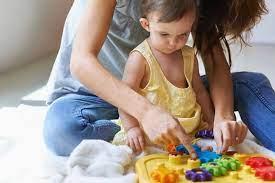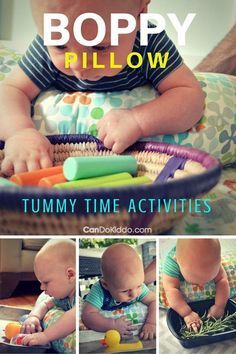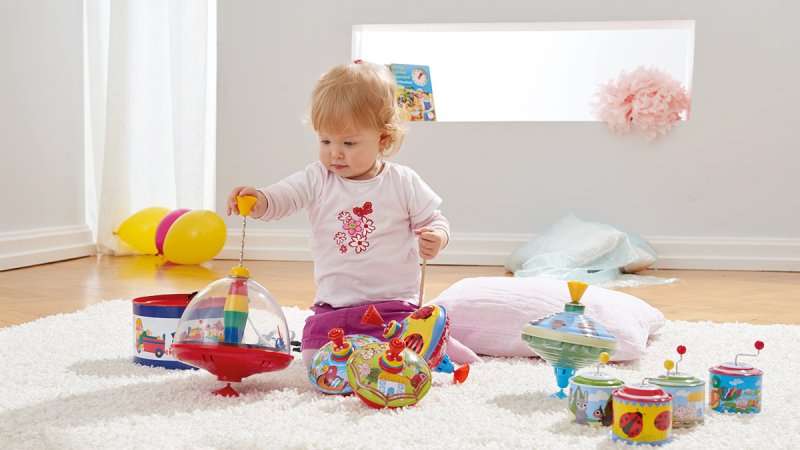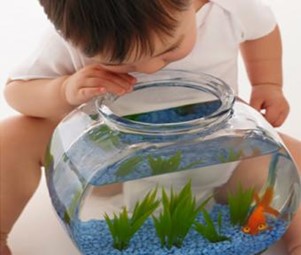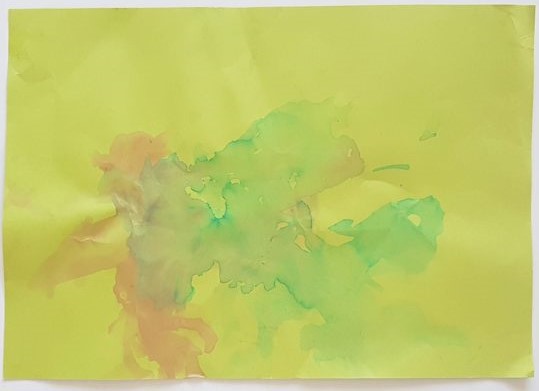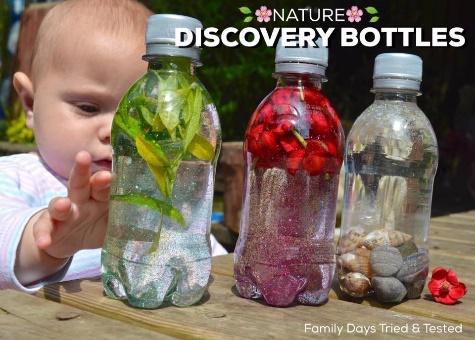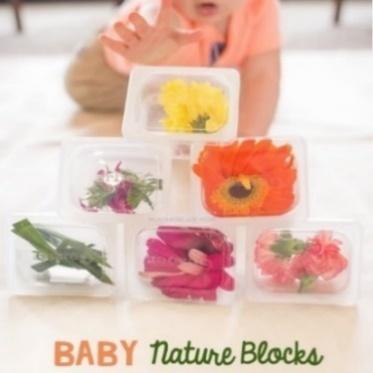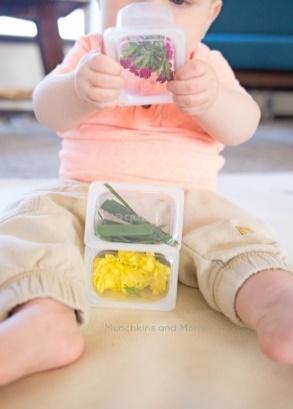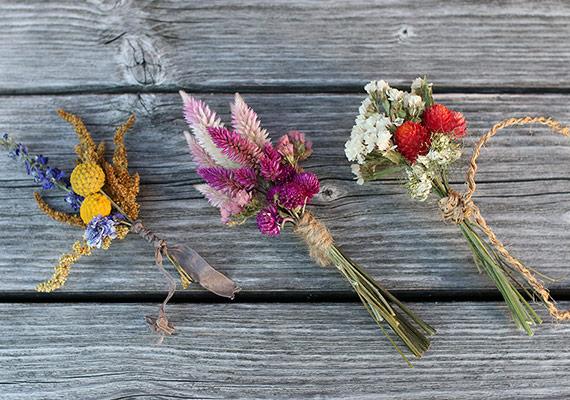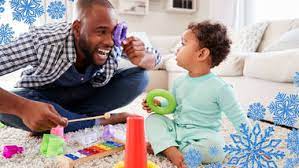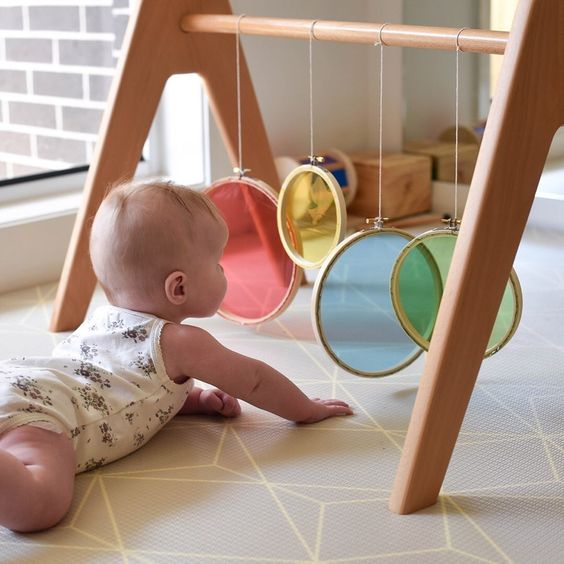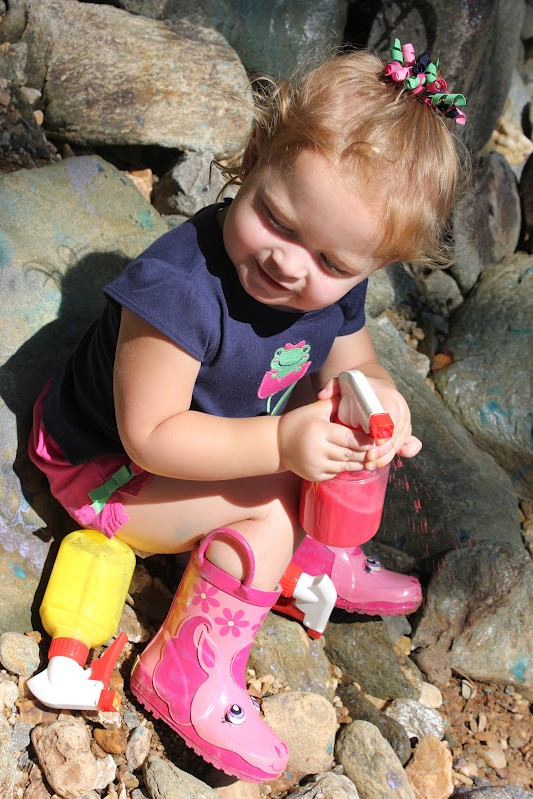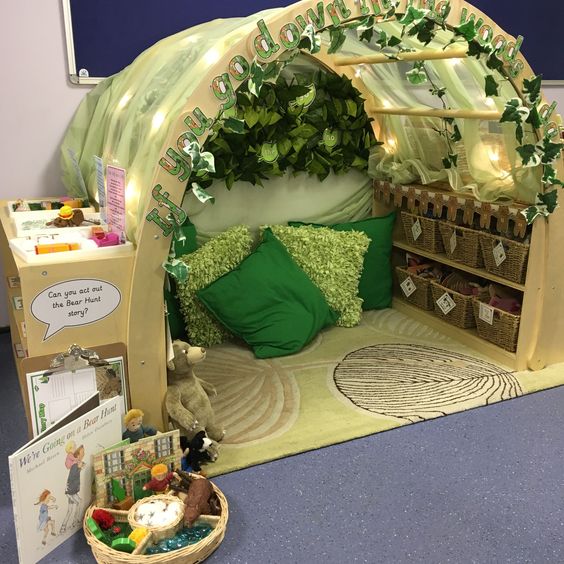The Importance of Playful Science
Play is an activity that is learned through playful engagement. Caregivers should join children in their play and encourage exploration rather than just watching them. Play begins in infancy and develops as they build relationships with caregivers. As they grow, they become more aware of others.
Early Brain Development
• A child’s brain is rapidly developing from ages birth
to three. This is a critical period in their lives.
• Intentional planning of STEM activities allows
brains to take in new information and adapt to new
learning.
• Babies are born with billions of nerve cells called
neurons which processes and stores information.
• Neurons that are not stimulated go through a
natural process called synaptic pruning.
How to Support STEM Play
• Talk to the child as you play.
• Model how to play and use animated expressions.
• Ask inquiry questions and introduce STEM vocabulary.
• Provide children space to play and explore alone and with peers.
• Scaffold the activity by modeling expanded use of the play materials.
• Provide open-ended materials in both inside and outside environments.
• Join the child on the floor as you engage in playful activities.
Early Learning STEM centers
• Things that roll and bounce
• STEM – Math and Science
• Things That Fit in Other Objects
Engineering and Math
Things that go on top or can be stacked Science, Math, Engineering
• Things that are smooth or rough/Science
• Things that are shiny or sticky/Science
• Things that reflect light or can be seen through/Science
• Things that can be pounded or pushed/Science, Technology, Math
• Things that are alike but are different sizes/ Science, Math
• Things with wheels/Science
• Things that open and shut/ Science, Technology
• Things that make noise when you shake them/ Science
• Things that can be used for scooping, grasping, and building/ Technology, Engineering
• Things that have wings/ Science
• Things that hop/ Science Babies in the Rain
• Infants belong in the rain.
• They belong outside in the grass and dirt.
• They belong on the floor with materials that will engage their senses and minds.
HINT: Post photographs of finished and ongoing STEM projects. So they know that you feel it was a significant experience.
Activity/Who says “Moo?”
• Materials – various stuffed farm animals
• Let children play with animals, then remove one and hid it.
•Ask a question such as what animal goes “meow”.
•When guessed correctly show animal.
Clear Bottle Magic Activity/Color Search
• Show an object and name its color
•Ask a child to find something in the room that is the same color.
Activity/Who Lives Here?
• Materials – small, medium and large boxes and small, medium and large stuffed animals.
• Decorate to look like houses.
• Show children how to match the small animal to a small box and so forth.
Science Vocabulary
Height Shape Size Temperature Texture Motion Melt
Physical Science
• Includes characteristics and physical properties of nonliving objects, including solid and liquid materials and how they change.
• Focuses on children’s ability to explore size, shape, weight, texture and flexibility.
Life Science
• Properties and characteristics of living things.
• Observe physical characteristics, behaviors, habitats, and needs of living things.
• Learn that there is diversity and variations in all living things.
Earth Science
• Observing and exploring the properties of earth materials such as soil, water, air, and rocks.
• Plan developmentally appropriate activities.
Ways We Empower Children
As a challenge for adults, there are ways in which we can present these semi-structured experiences as empowering for children - not just in their premise, but in their practice as well. Imagine how a child's experience changes when we do some of the following:
Making Choices Together
You'll feel the full power of these activities when everyone is on board and ready for the experience. Are your children interested in doing the activity you have planned for the day? If they're game for anything, great. Prepare them for what the adventure holds and the opportunities for them to take a lead. If they aren't feeling it, try to figure out why. You can always save an experience for another day or adjust it to make sure everyone is fully comfortable.
Focus on the Process Rather than the Product that was Produced
Some of most amazing things can occur when we focus on the process - the discovery and challenge phase - rather than the product or the outcome. The focus on the process that they are learning, allows them to be able apply that process to future endevours. They will be able to resond in a more independant fashion.
When we present an opportunity and then let a child navigate through it, of course it might not look or go the way you expect, but focus on what your child is getting out of the experience.
Often, they are stretching their creativity, they're learning by doing it on their own and they're challenging themselves in subtle - or visible - ways that build over time.
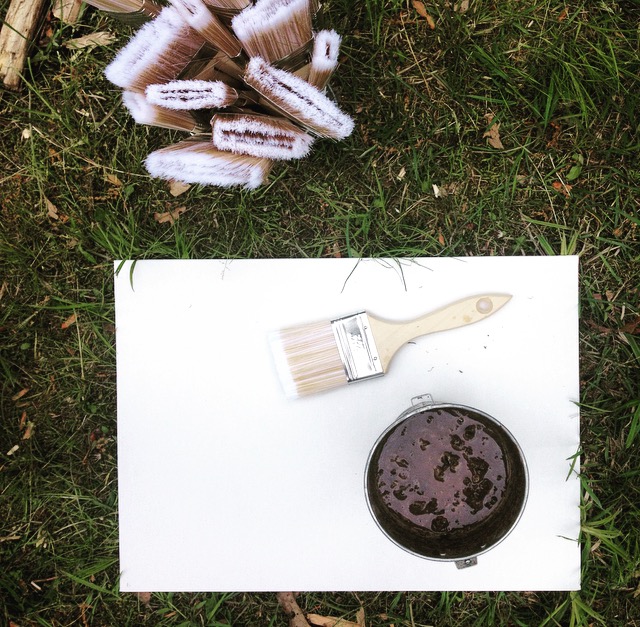
Photograph Courtesy of family+footprints.
Open Invitation
Sometimes we set up these activities or experiences and it feels like it just isn't a match for our child. They look at it and head off in another direction. Try playing out that string. If you leave a prompt out for a long time, do they eventually come back to it? In their free play are they taking your idea and running with it in their own direction? Leave the prompt out for days and see if it sparks something completely different now that you've lived life and thought about it passively for awhile.
With nature as an interactive classroom, there are many ways to incorporate activities in our outings. And with a focus on empowering children to take just as much of lead - albeit a slightly different one - as they do in free play, they have much to gain and much to inspire in others.
Conclusion
Children of all ages are naturally inclined to engage in STEM related learning. This makes it a natural fit for early childhood settings. Nature and the world around us offers endless resources for teachers of our youngest to the oldest child.
Have fun, explore, encourage and learn at any age.
Fun and Engaging Science Activities
for Infants
ByMichele Meleen M.S.Ed.
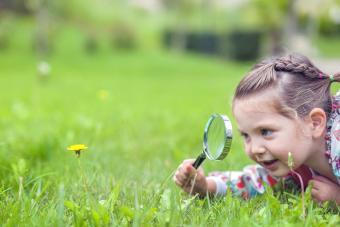
Children are born with an inquisitive mind and learn about their world through discovery. Scientific concepts are a natural part of every baby's life. A combination of structured activities and free play will help babies discover what things are and how they work.
Astronomy
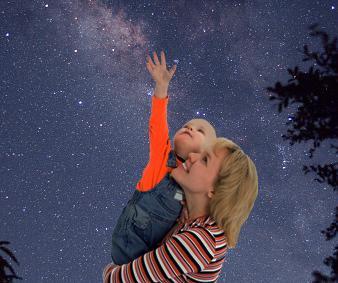
Given most babies' sometimes wacky sleeping schedules, it may be possible to take your baby outside and show her the starry night sky. However, if you have a great sleeper, or live in an urban area, observing the sky at night could be impossible to try at this age.

Seeing Stars
This activity can be done with infants of any age and requires parental assistance.
What You Need:
Hole punch
Index card
White envelope
Flashlight
Directions:
Punch several holes in the index card. You can make a fun shape if you want.
Place the index card in the envelope.
Keep the lights on indoors and hold the envelope out in front of you with the flashlight about two inches from the front of the envelope. You can either sit baby on your lap or hold the items directly in front of him. Observe the "stars" you created with the hole punch.
Move the flashlight to the back of the envelope, at the same distance. Allow baby to hold the flashlight and experiment while you make descriptive statements and ask questions.
The Result:
You should see the stars better when holding the flashlight behind the envelope because your body is blocking some light from the room. This is the same concept behind why stars can only be seen at night.
Biology
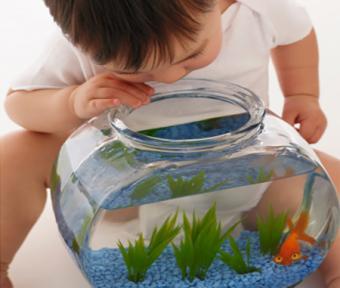
Biology is the branch of science that deals with living things, such as plants and animals. Simple activities like following a pet around and observing its behaviors can be entertaining for infants. While younger babies might only be able to watch, projects such as planting and tending to a garden will help teach biological concepts. Older infants will be able to take a more hands-on role.
Fish Out of Water
In this activity, you will create a thaumatrope to show your baby. A thaumatrope is a toy that moves quickly causing two separate pictures to appear as one. Adults will need to make and demonstrate the project, but babies of any age can enjoy watching the rapid movement revealed in this science experiment appropriate for infants and toddlers.
What You Need:
White card stock
Pen
Scissors
String
Hole punch
Ruler
Directions:
Cut a four-inch circle from the card stock. You can trace the bottom of a can or jar to make a perfect circle.
Near the edge in the middle of one side of the circle punch two holes, one slightly above the other. Repeat this on the opposite side of the circle.
Measure and cut two equal pieces of string, about 24 inches in length.
Using one string and one set of the punched holes, thread the string through one hole and out the other. Repeat on the opposite side.
Draw an empty fish bowl on one side of the paper and a simple fish on the opposite side, centering each as best you can.
Holding the strings to the sides, twist the paper disc so the string gets twisted.
Pull straight out on the strings as far as you can and watch the paper spin.
The Result:
As the circle spins faster it will appear as if the fish is actually inside the bowl. Your mind retains each picture as it passes and when the pictures pass this quickly, they overlap in your mind.
This experiment can also be done with a piece of sturdy paper taped to a pencil. In this case, you would twist the pencil by holding it upright between the palms of your hands. You can also get creative with the images by drawing other objects like a bird and a birdcage.
Chemistry
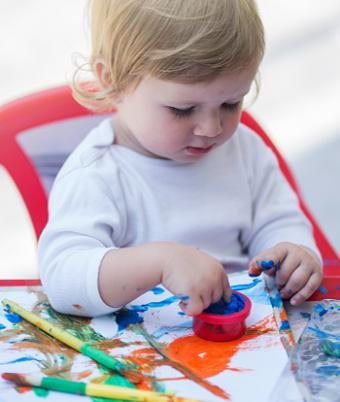
Chemistry is the study of matter, which is anything that has mass and takes up space. Because babies learn through sensory experiences this particular branch of science can be the most fun for babies and small children. There are many simple ways to explore chemistry with your infant. However, keep in mind one sense babies use frequently is taste. When offering these activities be sure to use ingredients that are safe to ingest in case baby eats some.
Make edible play dough. Younger infants can watch as you mix ingredients while older babies can help dump in pre-measured parts.
Using milk, food coloring and liquid dish soap you can show 'currents' of color created by the resistance of the milk fat to the watery food coloring.
Demonstrate the attraction between positive and negative parts by rubbing a balloon against your (or baby's) hair then picking up small circles of paper made with a hole punch.
Make edible finger paints. Show baby how mixing two colors can create a new color.
Demonstrate how gas is removed from a solution by taping a balloon over the top of a pop bottle, then shaking the bottle. (Make sure to use a thumb to hold the balloon in place.) The balloon will fill with the gas as it is released.
Create a fizzy chemical reaction by mixing baking soda and vinegar.
Earth Science

Earth science encompasses geology, astronomy, oceanography and meteorology where our planet and surrounding areas are studied. Simple activities that showcase Earth Science concepts include:
Making waves in the bathtub or water table
Playing in the sand or at the beach
Watching videos of meteor showers
Playing with a collection of medium-sized rocks (that can't be ingested or cause a major injury)
Acid Destruction
Babies who are able to grip small objects can help with this experiment by dropping the chalk into the vinegar when it is time. Younger infants can watch as the bubbles magically appear.
What You Need:
Standard stick of white chalk
Vinegar
Tall glass
Directions:
Fill the glass about one-quarter full of vinegar.
Drop a piece of chalk into the vinegar.
The Result:
You will see bubbles rise from the chalk and eventually see the piece of chalk break apart. As an acid, the vinegar reacts with the chalk which is made from limestone. This reaction causes the release of carbon dioxide, which is why you see the bubbles.
For older babies you could experiment with different types of rocks and natural materials to see if the effect is different. These variations may not capture the attention of younger babies, especially if the new materials do not cause a reaction.
Physics
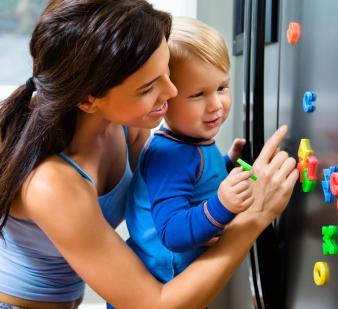
One of the more complicated branches of science, physics involves studying how stuff (matter) and energy relate to and affect each other both literally and theoretically. Some concepts covered under this branch include magnetism, electricity and mechanics. Fun activities for infants that involve these ideas and can either be demonstrated or acted out by baby include:
Placing and removing magnets on the fridge
Turning on the power switch of a toy or safe object like a desk lamp
Boom, Boom
Parents and caregivers can demonstrate this activity and older babies may be able to participate in a more hands-on way.
What You Need:
Tennis ball
Wagon
Directions:
Put the ball in the middle of the wagon bed.
Quickly pull or push the wagon forward.
Reset the ball and repeat.
The Result:
As the wagon moves, the ball will hit the back of it making a 'boom' or 'bang' sound (using a tennis ball helps ensure the sound is not too loud). The ball is stationary; it is actually the wagon that moves from under the ball which is why the ball hits the back of the wagon and not the front. This represents a demonstration of inertia which is the resistance to a change in motion.




